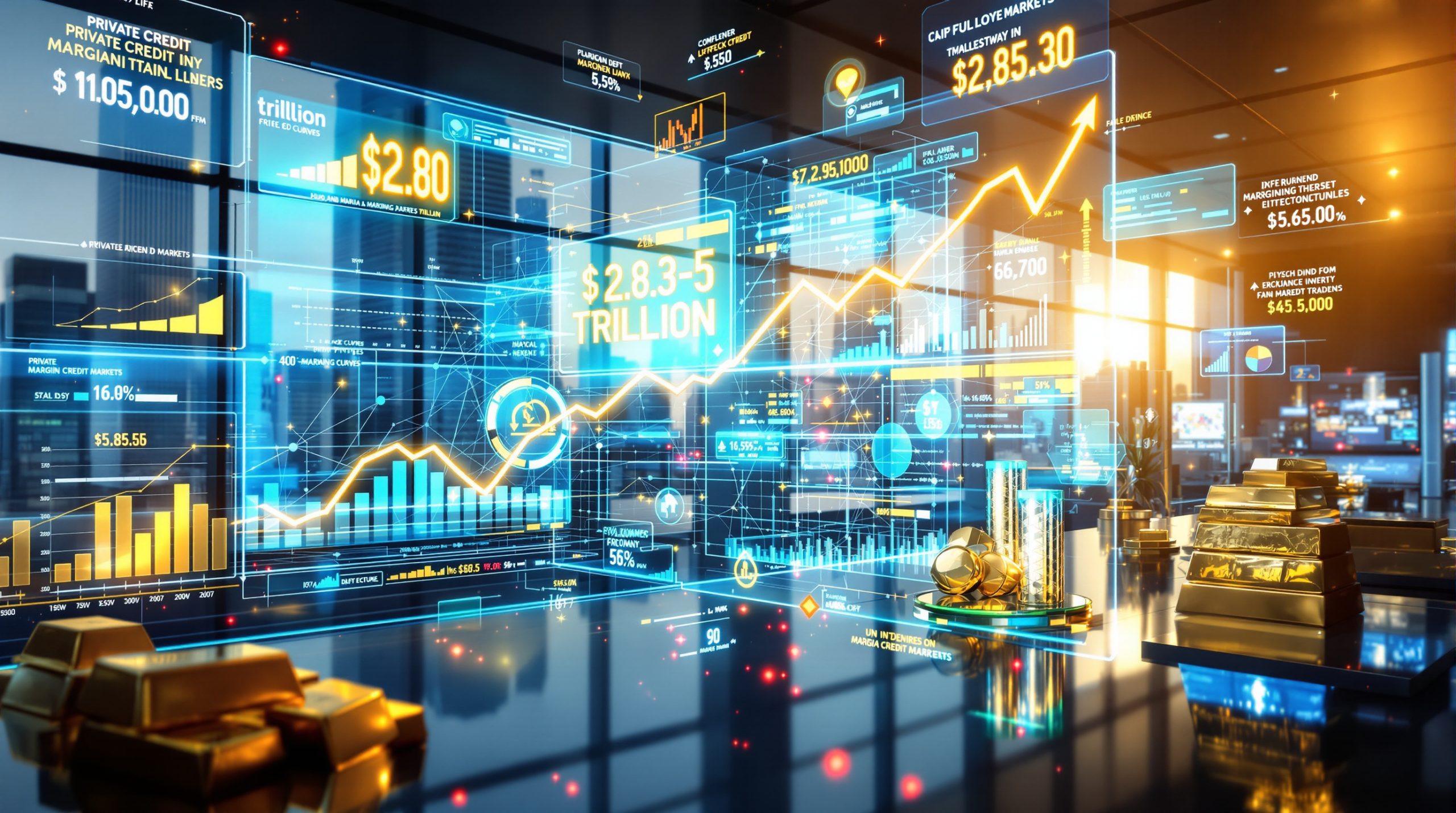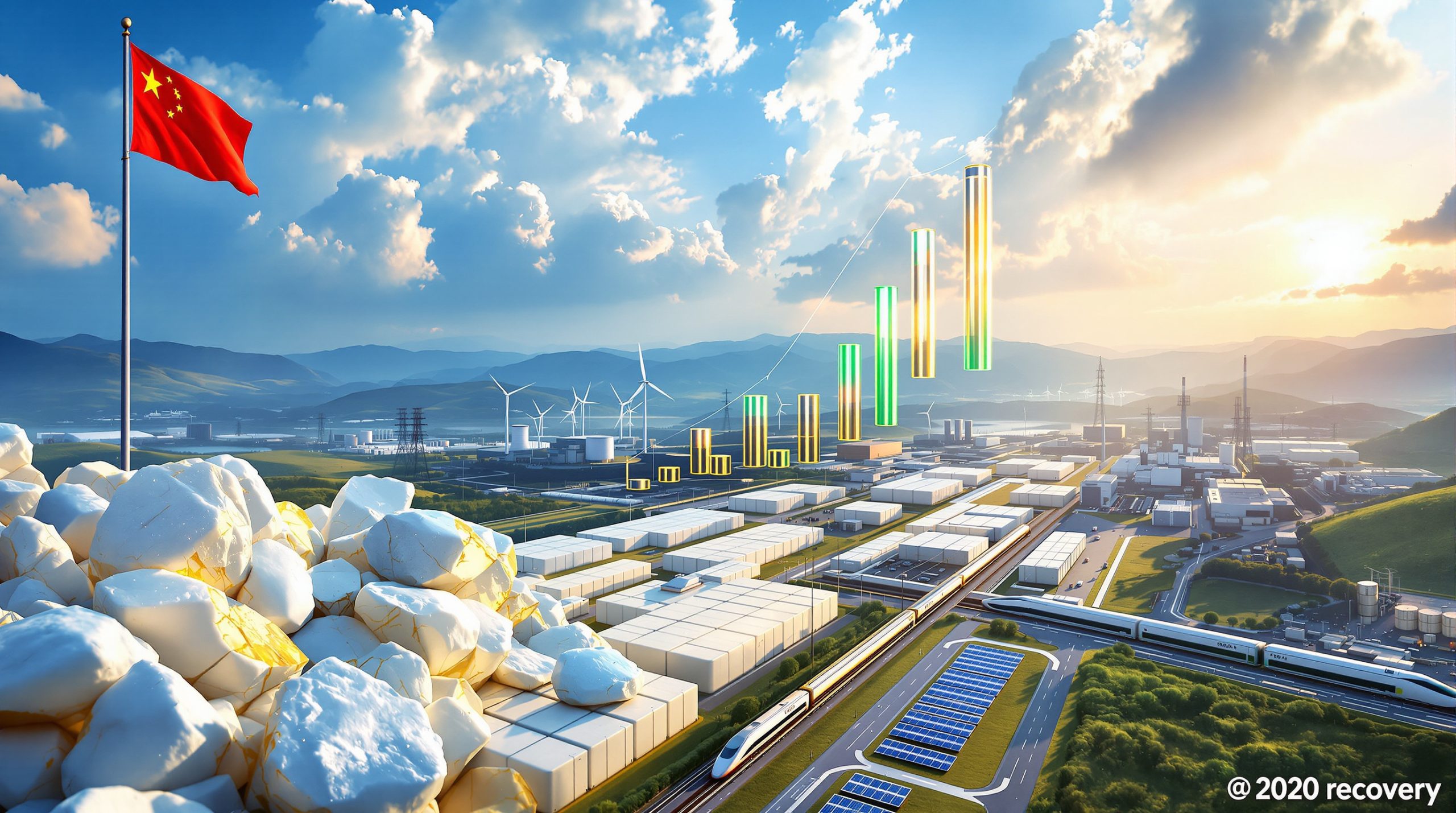Guangxi Yusheng's Germanium Tender: Market Analysis and Strategic Implications
The recent germanium tender by Guangxi Yusheng Germanium Industry has caught significant attention across the specialty metals market, providing crucial insights into price dynamics and demand trends. This successful transaction establishes important benchmarks for market participants and reveals underlying strengths in the germanium sector despite ongoing price fluctuations. Additionally, this tender reflects broader trends in the global mining landscape where strategic metals are gaining prominence.
What Was the Outcome of Guangxi Yusheng's Germanium Tender?
The recent tender for germanium products by Guangxi Yusheng Germanium Industry concluded with substantial transactions that provide valuable market signals about the state of germanium demand and pricing dynamics.
Tender Details and Transaction Summary
Guangxi Yusheng successfully completed a significant germanium tender, finalizing the sale of 1,000 kilograms of germanium dioxide at 10,650 yuan per kilogram and 1,000 kilograms of zone-refined germanium ingots at 16,100 yuan per kilogram. The tender's total transaction value reached an impressive 26.75 million yuan (approximately $3.76 million USD at current exchange rates).
The delivery terms specified self pick-up arrangements, with buyers responsible for all freight costs associated with transporting the purchased materials. According to Shanghai Metal Market reporting, contracts have been signed for these transactions, and the market is now awaiting payment confirmation and cargo collection to fully complete the process.
Market Reception and Analysis
Market participants described the transaction results as "unexpected yet reasonable," indicating a complex market sentiment that acknowledges both surprise at the pricing levels and recognition of underlying demand fundamentals. This successful tender completion, despite relatively high price points, demonstrates resilient market demand for germanium products.
The transaction volume is particularly significant within the specialty germanium market, where global annual production typically ranges between 130-150 metric tons. This single tender represents a meaningful percentage of quarterly market activity in China, which remains the world's dominant germanium producer.
Industry analysts note that this pricing establishes a clear benchmark that other market participants will reference in their own pricing strategies and negotiations moving forward. The tender's successful execution at these price points suggests stronger-than-expected demand fundamentals across germanium's key application sectors.
How Is the Current Germanium Market Performing?
The germanium market is demonstrating interesting dynamics with notable divergence in supplier strategies and resilient demand despite price variability. These patterns reflect broader mining industry evolution trends that are reshaping how critical materials are supplied and priced.
Price Differentiation Trends
A key characteristic of the current germanium market is the growing price divergence among suppliers, creating a more complex negotiation environment for buyers. According to SMM reports, some manufacturers have increased their shipment efforts while adopting more flexible and negotiable pricing strategies to maintain market share and revenue flows.
In contrast, other producers have maintained firm price positions while continuing regular deliveries to established customers. This strategic dichotomy reflects different approaches to market share competition and inventory management in the current environment.
The price differential between germanium dioxide and zone-refined germanium ingots (approximately 5,450 yuan/kg in the Yusheng tender) also provides insights into the value-added processing premiums currently prevailing in the market. This spread has remained relatively stable in percentage terms over recent quarters, suggesting consistent manufacturing cost structures across the processing chain.
Supply-Side Dynamics
Guangxi Yusheng has positioned itself as a significant germanium supplier through this tender, demonstrating both substantial production capacity and strategic inventory management capabilities. Their willingness to bring 2,000 kilograms of combined germanium products to market in a single tender indicates confidence in their production stability.
The tender's timing and volume suggest careful inventory management strategies at play, potentially aiming to optimize working capital while maintaining market presence. For context, global germanium reserves are relatively limited, with China controlling approximately 67% of worldwide production capacity, making large-volume transactions like this particularly significant for market sentiment.
Regional supply concentration remains a critical factor in germanium market stability, with Chinese producers continuing to dominate global output. This concentration amplifies the importance of tenders like Yusheng's in establishing market benchmarks and price discovery mechanisms.
What's Driving Demand in the Germanium Sector?
Germanium demand continues to demonstrate resilience despite price fluctuations, driven by multiple high-technology applications and strategic industrial requirements. The material's increasing importance in energy transition insights has further bolstered its market prospects.
End-Use Applications Fueling Growth
According to SMM market intelligence, downstream buyers remain actively engaged in purchasing regardless of prevailing price points, indicating robust demand fundamentals. This purchasing behavior stems directly from the "development of downstream terminal industries" that depend on germanium's unique properties.
The fiber optics sector represents a particularly strong demand driver, as germanium tetrachloride is essential in the production of optical fiber preforms. With global fiber optic network expansion continuing at approximately 8-10% annually, this application alone creates substantial baseline demand for germanium.
Infrared optical systems represent another critical demand center, with germanium lenses and windows used extensively in thermal imaging cameras, military targeting systems, and advanced driver assistance systems (ADAS). The growing adoption of night vision technologies in automotive safety systems has created an entirely new consumption channel that barely existed five years ago.
Solar cell technology, particularly high-efficiency multi-junction cells used in space applications and concentrated photovoltaic systems, continues to require germanium substrates for optimal performance. While this remains a smaller volume application, it represents a high-value sector with strict quality requirements.
Strategic Importance of Germanium
Germanium's status as a technologically critical material continues to drive both commercial and strategic demand. Its unique semiconductor properties, including excellent electron mobility and radiation hardness, make it irreplaceable in certain specialized electronic components.
The material's role in fiber optics infrastructure underscores its importance to telecommunications security and expansion, while its infrared optical applications support both commercial and defense capabilities in sensing, surveillance, and targeting systems.
Several nations, including the United States through its critical minerals directive, maintain strategic stockpiles of germanium, creating an additional demand layer that operates somewhat independently from commercial market forces. These strategic reserves occasionally undergo replenishment cycles that can temporarily increase market demand.
The combination of limited global production, concentrated supply, and growing high-technology applications has elevated germanium's profile as a strategically important material across multiple industrial ecosystems. This importance is reflected in its designation as a "critical material" by various governmental assessments worldwide.
What Are the Technical Specifications of Germanium Products?
Understanding the technical specifications of germanium products is essential for appreciating their market dynamics and application requirements.
Product Characteristics and Quality Standards
The germanium products included in the Yusheng tender represent two distinct points in the value chain with different technical specifications and applications:
Zone-refined germanium ingots typically feature extremely high purity levels, often 99.999% (5N) or higher, achieved through multiple zone refining passes. These ingots serve as the starting material for wafer production in electronic applications, with resistivity specifications typically between 5-50 ohm-cm depending on the intended semiconductor application.
Germanium dioxide (GeO₂) serves as both an intermediate product in germanium refining and as a final product for specific applications. Industrial-grade germanium dioxide typically maintains 99.999% purity with strict limits on metallic impurities, particularly aluminum, iron, and other transition metals that could interfere with its catalytic or optical applications.
Quality standards for germanium materials have become increasingly stringent as applications advance, with specifications for trace impurities now commonly measured in parts per billion rather than parts per million for the highest-grade electronic materials.
Processing and Manufacturing Considerations
The zone-refining technology used to produce high-purity germanium ingots represents a sophisticated metallurgical process that exploits the principle of segregation during solidification. By creating a moving molten zone through a germanium rod, impurities are gradually swept to one end, resulting in progressive purification with each pass.
This zone-refining process typically requires multiple passes to achieve the 99.999% purity levels demanded by semiconductor applications, with each pass concentrating impurities further toward one end of the ingot. The process requires precise temperature control, clean room conditions, and sophisticated process monitoring to achieve consistent results.
The production chain from germanium dioxide to zone-refined ingots involves multiple steps, including reduction to metallic form, initial casting, and then successive zone-refining operations. Each step in this process adds significant value to the material, explaining the substantial price differential between the two products in the Yusheng tender.
Manufacturing challenges in the germanium supply chain include the energy-intensive nature of zone refining, the requirement for exceptionally clean processing environments, and the need for specialized expertise in handling this relatively rare material. These factors contribute to the premium pricing of high-purity germanium products relative to the raw dioxide.
How Does This Tender Impact the Broader Metals Market?
Guangxi Yusheng's germanium tender has implications that extend beyond germanium itself to influence dynamics across related specialty metals markets, particularly those considered defence‐critical materials.
Minor Metals Market Context
Within the minor metals category, germanium occupies a distinct position due to its relatively small production volume but high technological importance. The tender volume of 2,000 kg (combined dioxide and ingots) represents approximately 2% of China's annual germanium output, making it significant enough to influence near-term market sentiment.
Germanium's price movements often show correlation with other technology-focused minor metals, particularly gallium and indium, which share some application spaces in semiconductor and electronic industries. Recent market data shows that while gallium prices fell approximately 18% in Q1 2025 after export quota adjustments, germanium has maintained more stable pricing, suggesting different fundamental drivers.
The price ratio between germanium and related metals serves as an important indicator for multi-material technology developers, particularly in the semiconductor sector where material substitution decisions may be influenced by relative cost structures. The current germanium pricing maintains historical ratio relationships with gallium (approximately 3:1) and indium (approximately 2.5:1).
Global Market Implications
Germanium tenders like Yusheng's provide crucial international price benchmarking effects that influence global contract negotiations. With China controlling approximately two-thirds of global germanium production, pricing signals from major Chinese suppliers have outsized influence on worldwide market expectations.
For global manufacturers dependent on germanium inputs, such as fiber optic producers and infrared optics fabricators, the tender results provide important forward visibility for material cost planning. The pricing stability demonstrated in this tender, compared to previous transactions, may encourage more aggressive purchasing by end-users who had been delaying commitments due to price uncertainty.
Regional price differentials for germanium products persist, with premiums typically observed in North American and European markets relative to Asian pricing. However, the transparent pricing established through this tender may help narrow these regional gaps by providing a clear reference point for negotiations across different markets.
Trade flows in germanium continue to be influenced by both commercial factors and strategic considerations, with some nations implementing export controls or monitoring systems for this critical material. The successful completion of this tender suggests that commercial channels remain functional despite the increasing strategic scrutiny of critical mineral supply chains.
What Should Industry Participants Watch for Next?
Market participants across the germanium value chain should monitor several key indicators and developments in the coming months to inform their strategic decisions.
Future Market Indicators
Following Guangxi Yusheng's successful tender, market observers anticipate a period of price stabilization as this transaction provides a clear reference point for other market participants. This benchmark may reduce price volatility in the near term as both buyers and sellers adjust expectations to align with these demonstrated transaction levels.
Supply-demand balance projections for the remainder of 2025 will be particularly important to monitor, with current indications suggesting continued tight market conditions. Global germanium production is expected to increase by only 3-5% this year, while demand growth from key sectors like fiber optics and infrared applications continues at 7-9% annually.
Industry participants should watch for potential additional tenders from other major producers, which could signal either confidence in market demand or strategic inventory adjustments. The timing and pricing of any subsequent tenders would provide valuable insights into producer sentiment and inventory positions.
Inventory level impacts on market dynamics remain a critical factor, with reports suggesting relatively lean inventory positions throughout the supply chain. This lean inventory situation increases the importance of each major tender or production announcement as market participants have limited buffers against supply disruptions.
Strategic Considerations for Market Participants
For downstream buyers, the current market environment suggests implementing multi-sourcing procurement strategies where possible, combined with longer-term contracting to secure supply. The demonstrated willingness of buyers to participate in the Yusheng tender indicates acceptance of current price levels, which may reduce leverage in near-term negotiations.
Producers may consider balanced pricing strategies that maintain revenue while ensuring continued market share retention. The divergence in pricing strategies observed in the market suggests opportunities for differentiated approaches based on individual cost structures and customer relationships.
Inventory management approaches in the current market should focus on securing essential operational supplies while avoiding excessive stockpiling that could tie up working capital. The tender results suggest sufficient market liquidity to obtain material when needed, reducing the urgency for defensive stockpiling.
Contract negotiation considerations should reflect the recent tender results, with both buyers and sellers recognizing the demonstrated market clearing prices as reasonable starting points for discussions. Formula pricing mechanisms linked to published benchmarks may provide mutual benefits in this environment of moderate price stability.
FAQ About the Germanium Market
What is germanium primarily used for?
Germanium serves as a critical material in multiple high-tech applications, with fiber optics representing the largest consumption sector (approximately 35-40% of demand). The material is essential for manufacturing fiber optic preforms through germanium tetrachloride, which enables the precise refractive index profiles needed for signal transmission.
Infrared optics constitute the second-largest application (approximately 20-25% of demand), with germanium's unique transparency to infrared wavelengths making it ideal for thermal imaging systems, night vision equipment, and advanced sensing applications. NASA has notably employed germanium-based sensors in space telescope applications, including components in the Hubble Space Telescope's imaging systems.
Other significant applications include polymerization catalysts (15-20%), semiconductor devices (10-15%), and solar cell technologies (5-10%). In particular, high-efficiency multi-junction solar cells used in space applications rely on germanium substrates for optimal performance.
How volatile is the germanium market compared to other minor metals?
Germanium typically demonstrates moderate price volatility compared to other minor metals, with annual price fluctuations historically averaging 15-25% compared to more volatile metals like cobalt (30-40%) or vanadium (40-60%). This relative stability stems from germanium's diverse application portfolio and the presence of long-term contracts in key sectors like fiber optics.
The International Monetary Fund's Commodity Price Stability Index ranks germanium in the middle range among minor metals, reflecting balanced supply-demand fundamentals despite concentrated production. While price shocks can occur due to supply disruptions or unexpected demand surges, these typically resolve more quickly than in more speculative metal markets.
Market Perspective: "Germanium's price stability relative to other minor metals reflects its mature application base and the presence of sophisticated end-users who maintain strategic inventory positions." – Shanghai Metal Market Analysis, June 2025
What factors most significantly impact germanium pricing?
Key pricing factors include production costs in China (where energy and environmental compliance expenses have increased by approximately 20% over the past three years), and the high concentration of supply among a relatively small number of producers. The top five global producers control approximately 75% of worldwide production capacity.
Demand shifts in key application sectors, particularly fiber optics and infrared applications, can significantly influence pricing, with fiber optic network expansion plans often telegraphed months in advance through capital expenditure announcements by telecommunications companies.
The U.S. Defense Logistics Agency stockpiling activities periodically impact market dynamics, with the DLA's Annual Materials Plan for 2024 indicating potential germanium acquisitions that could affect available commercial supply. These strategic stockpile actions often create temporary demand surges that influence short-term pricing.
Technological advancements can also impact pricing, particularly when they either increase material efficiency (reducing demand) or open new application spaces (increasing demand). Recent developments in germanium recycling from end-of-life products have modestly increased secondary supply, though primary production remains dominant.
How does germanium dioxide differ from germanium metal in applications?
Germanium dioxide serves primarily as a catalyst in polyethylene terephthalate (PET) production, improving reaction efficiency and product quality in the polymer industry. It also functions as a critical raw material for specialty optical glasses, particularly those requiring high refractive indices for applications in camera lenses and optical instruments.
In contrast, metallic germanium (in ingot or wafer form) serves directly in semiconductor applications, infrared optical components, and as substrates for advanced solar cells. The metallurgical conversion pathway from dioxide to metal involves reduction processes using hydrogen or carbon, followed by zone refining for high-purity applications.
While germanium dioxide sells at approximately 65-70% of the price of refined metallic germanium (as demonstrated in the Yusheng tender price differential), the conversion process requires significant technical expertise, energy input, and quality control to achieve the high-purity metal required for advanced applications.
Disclaimer: Market
Looking to Stay Ahead of Major ASX Mineral Discoveries?
Discovery Alert's proprietary Discovery IQ model delivers real-time notifications when significant mineral discoveries are announced on the ASX, helping investors make informed decisions before the broader market reacts. Explore historic returns from major discoveries and learn how you can gain this crucial market advantage at Discovery Alert's discoveries page.




